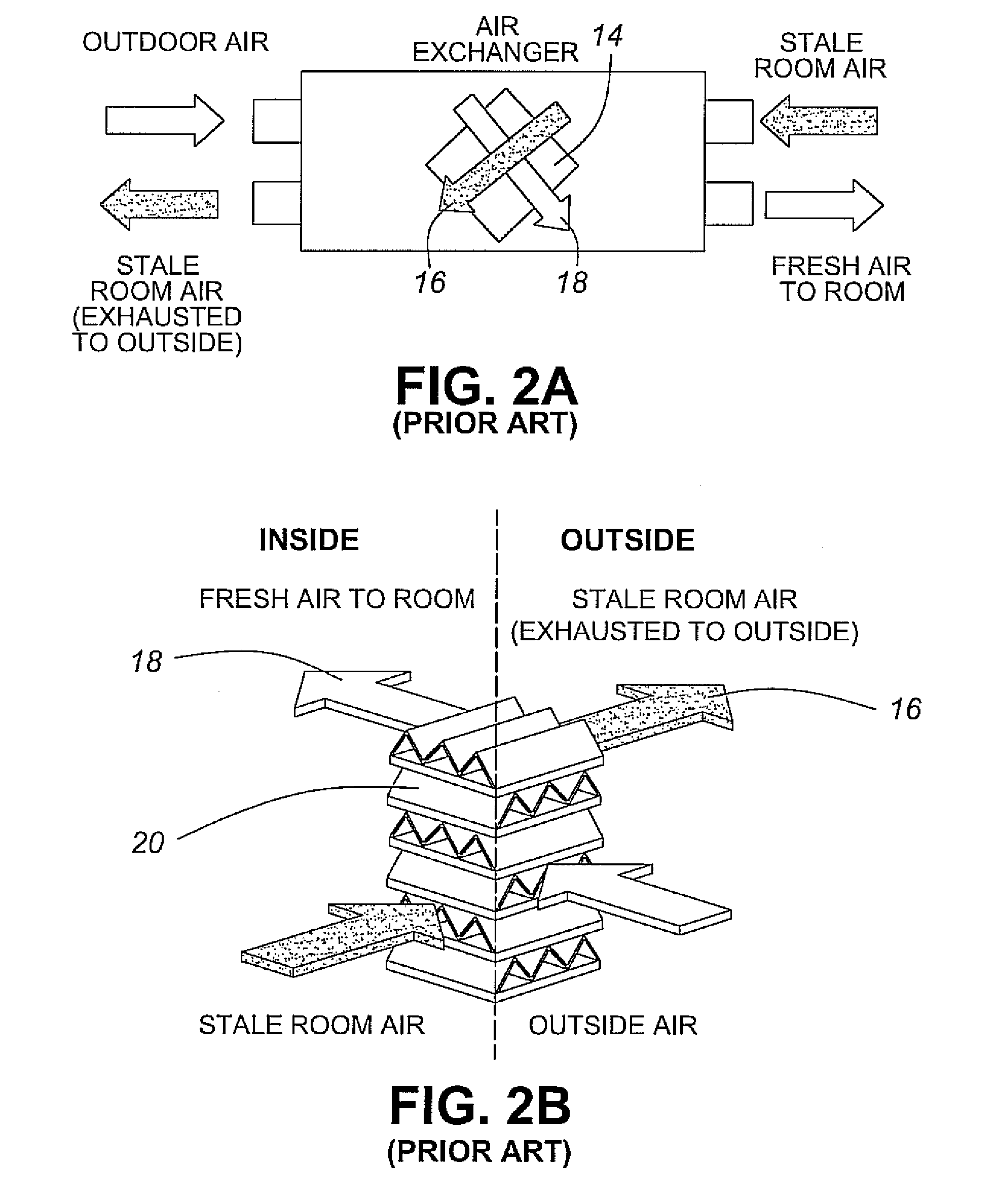Flat plate heat and moisture exchanger
a technology of heat and moisture exchanger and flat plate, which is applied in the direction of air heaters, lighting and heating equipment, electrochemical generators, etc., can solve the problems of limited airtight home natural ventilation, health problems, mold growth and structural damage, etc., and achieve the effect of convenient manufacturing and operation efficiency
- Summary
- Abstract
- Description
- Claims
- Application Information
AI Technical Summary
Benefits of technology
Problems solved by technology
Method used
Image
Examples
Embodiment Construction
[0042]In general, the invention provides an ERV cross flow plate core which allows two air streams to flow in close proximity to one another and transfer heat / moisture through a membrane separating the two air streams. The ERV core consists of left and right hand flat spacers with membranes laminated thereto to form wafers which are stacked together to form the core.
[0043]Referring to FIGS. 3A and 3B, a top and side view respectively of a left hand spacer 22 in accordance with the present invention is depicted. Each left hand spacer 22 is generally hexagonal in shape and includes a series of parallel curvilinear arms 24 to form channels 26, which as will be explained below, serve to direct a first air stream moving through the ERV core. A membrane 34 (see FIG. 5) is bonded to the top of the left hand spacer 22 and trimmed to the shape of left hand spacer 22. The left hand spacer 22 with bonded membrane 34 forms a left hand wafer 35.
[0044]FIG. 4 depicts aright hand spacer 28. Similar...
PUM
| Property | Measurement | Unit |
|---|---|---|
| Angle | aaaaa | aaaaa |
| Digital information | aaaaa | aaaaa |
| Melting point | aaaaa | aaaaa |
Abstract
Description
Claims
Application Information
 Login to View More
Login to View More - R&D
- Intellectual Property
- Life Sciences
- Materials
- Tech Scout
- Unparalleled Data Quality
- Higher Quality Content
- 60% Fewer Hallucinations
Browse by: Latest US Patents, China's latest patents, Technical Efficacy Thesaurus, Application Domain, Technology Topic, Popular Technical Reports.
© 2025 PatSnap. All rights reserved.Legal|Privacy policy|Modern Slavery Act Transparency Statement|Sitemap|About US| Contact US: help@patsnap.com



